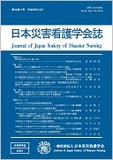Japanese
English
- 有料閲覧
- Abstract 文献概要
- 参考文献 Reference
要 約
目的:GISを用いて、津波浸水予測エリアに居住する精神障がい者の、津波からの逃げ遅れ要因を明らかにすること。
方法:津波浸水予測エリアに居住する24人を分析対象とした。データ収集は、事業所の看護師にK-DiPSTMシートを用いた聞き取りを依頼した。
結果:対象者のうち24人が、南海トラフ地震で想定される津波浸水予測エリアに居住していた。5箇所の福祉避難所のうち4箇所が津波浸水予測エリアに位置していた。避難行動シミュレーションの結果、1人が逃げ遅れると推定された。逃げ遅れの要因は、避難方向と考えられ、福祉避難所への避難行動が逃げ遅れのリスクを高めている可能性がある。
結論:福祉避難所を指定し、避難を呼びかける対策は、負の誘導効果により、津波流入方向への移動を誘発する可能性がある。避難途中の被災を防ぐためには、福祉避難所の指定位置、浸水深、津波の流入方向、距離等、地理的な条件を考慮する必要がある。
OBJECTIVE: To determine escape delay from a tsunami of mentally disabled people registered in a tsunami inundation prediction area using GIS in an employment support room for individuals with disabilities.
METHODS: With this survey using the K-DiPS sheet, I investigated 24 mentally disabled people living in a tsunami inundation prediction area for a Nankai Trough earthquake.
RESULTS: Four of the five local welfare evacuation centers were located in a tsunami inundation prediction area. Following simulation of evacuation behavior, I concluded that one of the 24 subjects would be blocked while trying to escape. I believe the cause was a poor choice of evacuation route. Trying to move to welfare evacuation centers may increase the risk of hindered escape.
CONCLUSION: Owing to the negative feedback effect, if the location of a welfare evacuation center is specified and an announcement about the need to evacuate is made, it is possible that evacuees will head toward the influx of the tsunami. Therefore, to prevent accidents at such times, it is necessary to consider geographic factors, such as the position of the designated welfare evacuation shelters, flood depth, tsunami flow direction, and the distance to the welfare evacuation shelters.
Copyright © 2018, Japan Society of Disaster Nursing All rights reserved.


